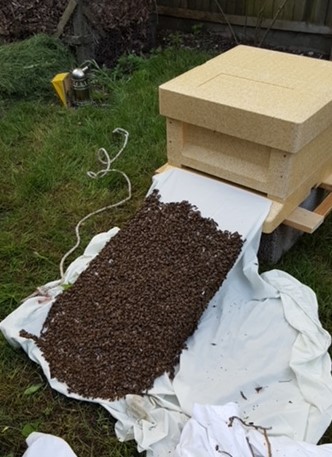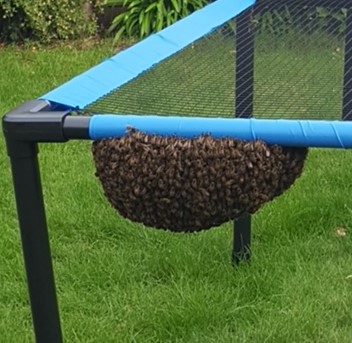A honey bee swarm in late spring/ early summer is a natural occurrence. When a successful colony of bees decides that they need to split due to the hive becoming overcrowded, a large number of bees will leave the hive with the queen bee. This can be regarded as a method of colony reproduction as where there was one ‘superorganism’, there are now two and the bees remaining in the original hive will produce a new queen to continue the colony.
If you find a swarm it is on its way to a new location which will already have been selected by scout bees. The swarm will cling to something such as a branch, gatepost or fence, but sometimes very interesting and challenging places. It forms a rugby ball shaped mass of bees, with others joining all the time, until all become settled. A swarm is not dangerous as the bees are intent on their own matters, but it is wise to keep a distance. It is an astonishing sight when you see a swarm for the first time and gives a sense of the wonder of a bee colony. If the swarm is not collected by a beekeeper, it will eventually move on in the same way it arrived.


Swarms are valuable to beekeepers as it gives them a chance to increase their apiary (a group of hives). If you spot a swarm we encourage you to find a local beekeeper to come and collect the bees. That is a fascinating procedure to watch if you are able to keep your distance from the action.
If you go to the Suffolk Beekeepers website https://suffolkbeekeepers.co.uk you’ll find another source of information on swarms. If you have a swarm of bees or see one settled somewhere, there is an interactive map on the Swarms page which allows you to find a beekeeper nearby who will be able to give advice and either collect the bees or find someone available who can.
